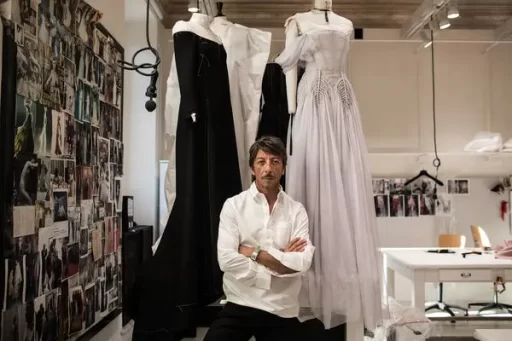The fashion designer is the creative mind that brings the collection to life by interpreting contemporary trends.
He or she develops designs, sketches, chooses colors and fabrics, and follows the creative process up to the production of the final samples.


These means that sometimes they can express themselves 100% according to their own personal tastes , while in other circumstances they have to get “under the skin” in the soul of a brand by interpreting it as best they can and emotionally translating it into a modern key.
Keeping up to date and reading fashion books and journals is essential, as is understanding what the market demands, especially at a time when the buyer is less and less passive, so understanding their needs and knowing how to translate them is crucial to the success of a line.
Usually a designer comes from a humanistic or artistic background, so visiting exhibitions, museums, and art galleries is not unusual, as is taking an interest in new trends, fashions, and changes in social mores that can be integrated and inspired in collections. To be a good designer, the path winds between degrees and specialized fashion institutes where one can learn the history of fashion, commodity aspects of raw materials, drawing techniques and digital design, all to be integrated possibly with a period of practice in a production/ tailoring workshop or at a design studio where one can understand the reality of fashion.
Before becoming a full-fledged designer, one goes through an assistant position and sometimes stops at that becoming indispensable as specifically competent and useful to the activity of the creative mind. The assistant can concentrate in him or herself many functions ranging from initiating to completing work initiated by the senior designer (e.g. arranging drawings, prints, putting the creative’s ideas “on the good side,” but also more technical activities such as helping with fabric selection, visiting trade shows, checking on samples).
Generally this figure is identified by the appellation Junior, but despite the nomenclature he or she must know how to use graphics programs and sometimes excel (better than the designer does).

In a studio or fashion house there may be a junior or a group of juniors working in teams captained and supervised by a senior who is responsible for their work. Each Junior is generally responsible for one part of the work and as stated earlier today must know graphic design programs or even,in the case of pattern making, be familiar with CAD.
Assistants are expected to be punctual, have good will, and be able to be proactive and therefore creative within the limits that are granted by the head designer whose vision they must always support. Being a junior assistant is the first stage in a designer’s journey for which competition is fierce and often the position underpaid (entry level) in order to be able to guarantee experience that can be boasted on the resume.

After passing the selection, the resource is usually placed immediately within the style office where he or she will have to deal with the creation and development of new models on the basis of a theme defined by the Head Designer, of a line that is often the brand’s own, created over the years and recognized in the market and also in consideration of the fashion trends prevailing in the market, all while respecting more technical and economic aspects.
It sometimes happens that precisely the skill in the latter (which are not exactly the passion of the designer in charge of a brand), causes the assistant to become Senior but remain anchored more to a set of skills more related to the work of the product office than the style office and thus often transitions from one compartment to the other, alternatively experience in the position of assistant designer may allow for growth in that area to the point of promoting the Junior to Senior ( the designer’s right hand man) who may have responsibility for a line or a compartment of the collection.
by Stefano Sacchi
21st October, 2022




